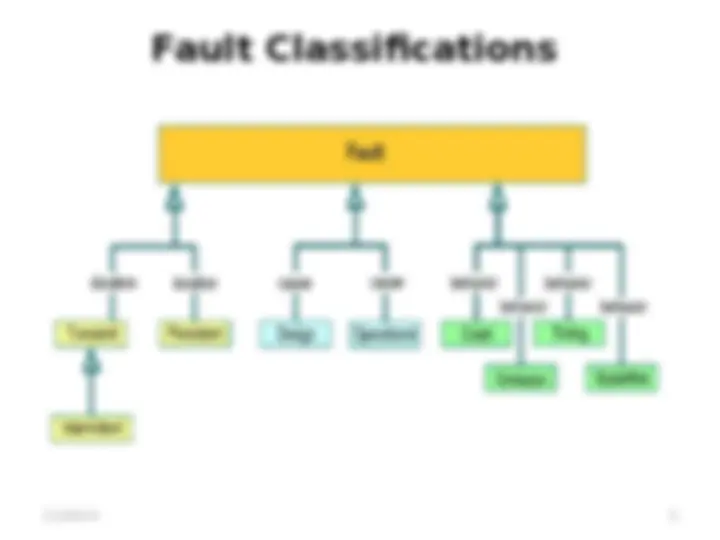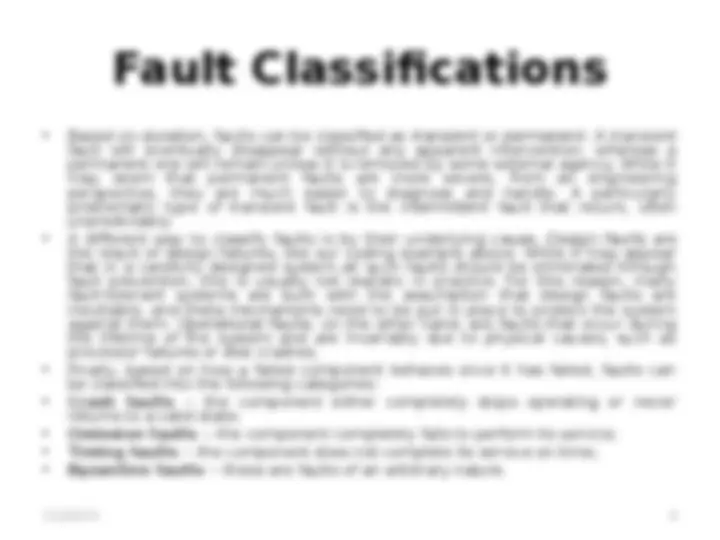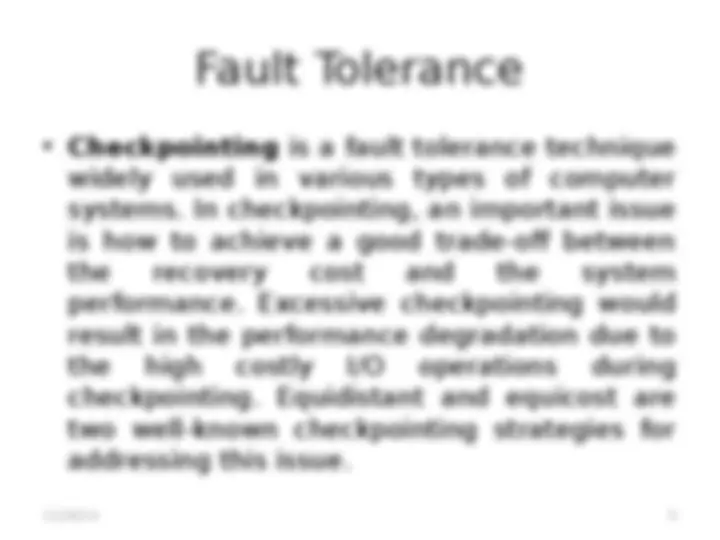





Study with the several resources on Docsity

Earn points by helping other students or get them with a premium plan


Prepare for your exams
Study with the several resources on Docsity

Earn points to download
Earn points by helping other students or get them with a premium plan
Community
Ask the community for help and clear up your study doubts
Discover the best universities in your country according to Docsity users
Free resources
Download our free guides on studying techniques, anxiety management strategies, and thesis advice from Docsity tutors
Fault tolerance techniques in computer systems, focusing on fault isolation, containment, and standby schemes. Standby schemes include cold, warm, and hot standby, each with its advantages and disadvantages. Faults are classified based on duration, underlying cause, and behavior. Checkpointing is a fault tolerance technique used to balance recovery cost and system performance.
Typology: Study notes
1 / 7

This page cannot be seen from the preview
Don't miss anything!



